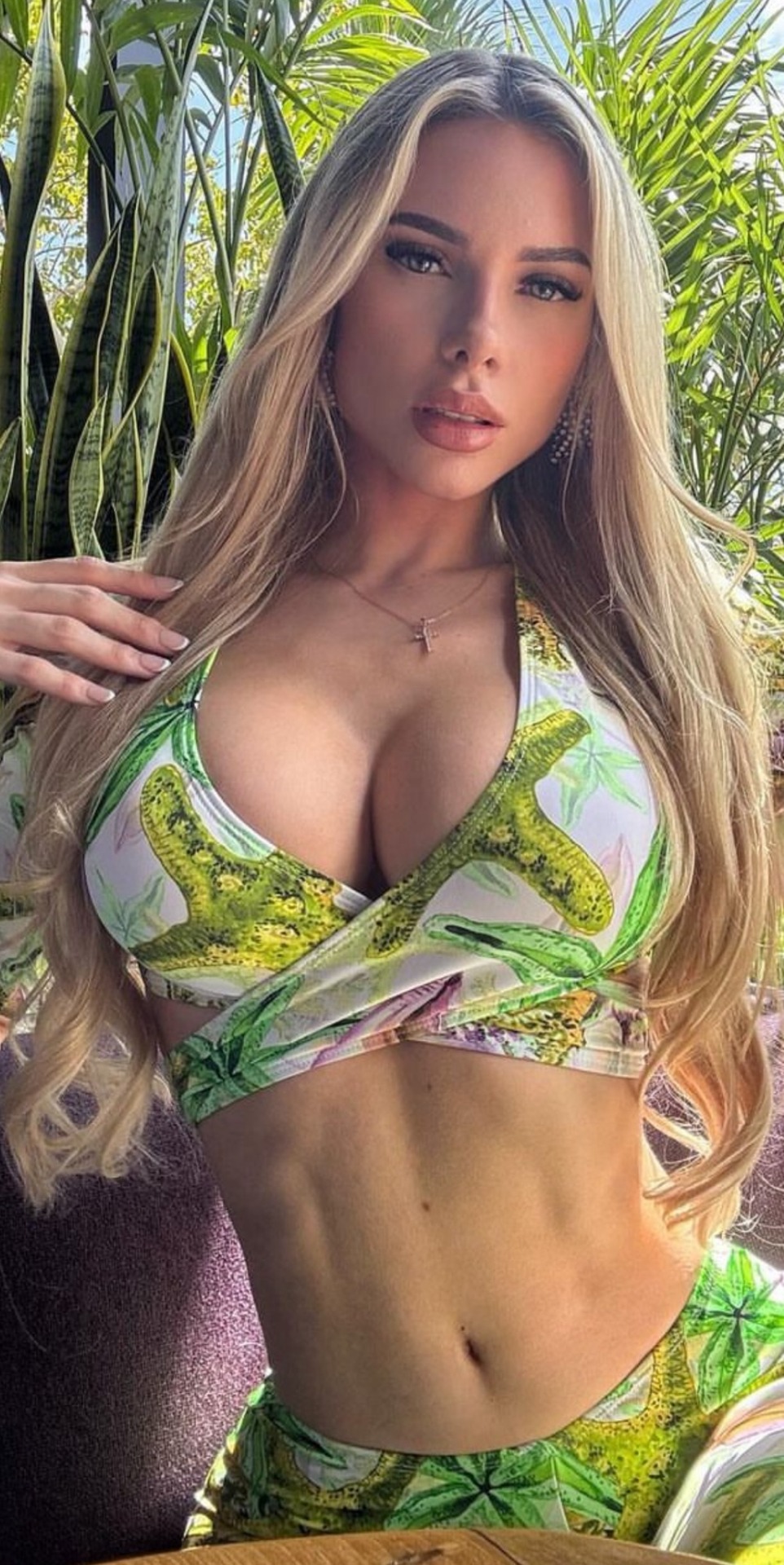#Selika
Photo

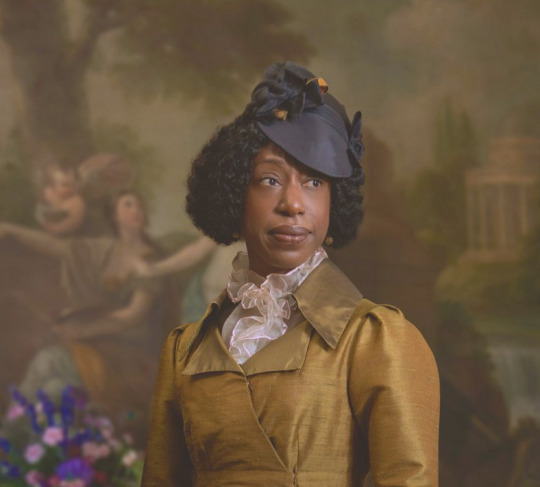
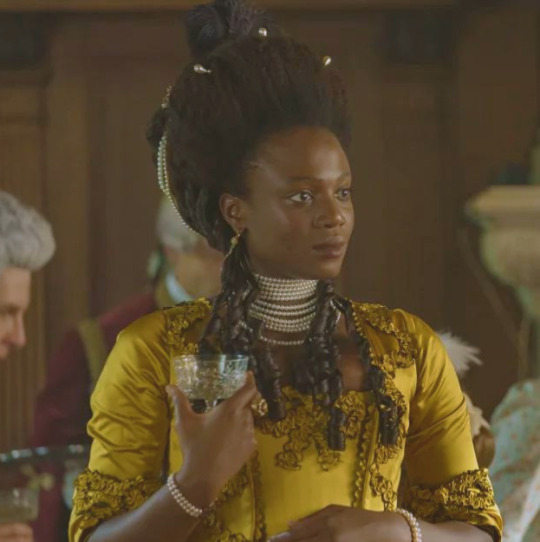
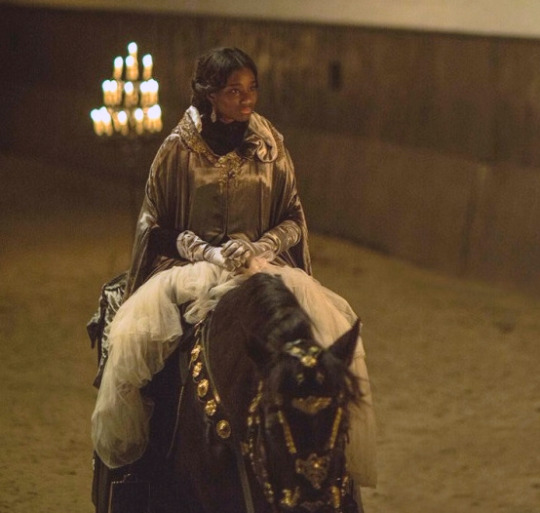
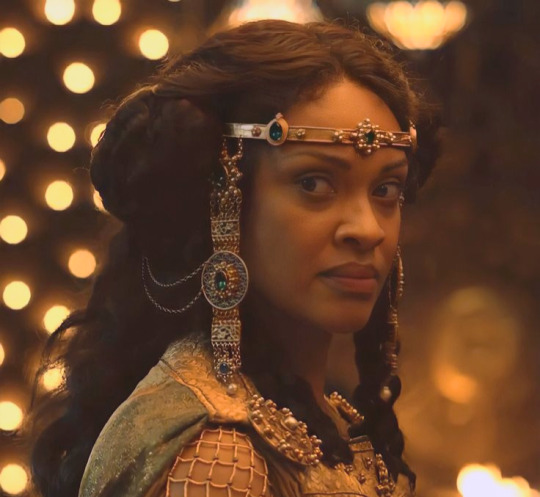

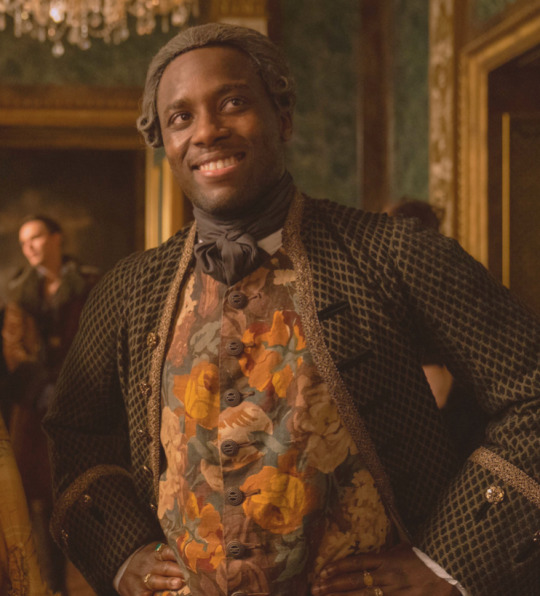



Black Royalty, Nobility, & Leaders (in historical and fantasy films/tv shows) Pt 3
Mr. Malcolm || Mr. Malcolm’s List
Lady Russell || Persuasion (2022)
Ondine, Vicomtesse de Valmont || Dangerous Liaisons (Starz, 2022)
Princess Selika || The Adventures of Selika
Miriel, Queen Regent of Numenor || Rings of Power
Lady Laena Velaryon || House of Dragons
Lord Arkady || The Great (Hulu)
Lady Ethelfritha Rose Splinter of Devon || Catherine Called Birdy
Alessandro de’ Medici, Duke of Florence || Il Moro
Peggy Scott || Gentlewoman/ Black Elite of Gilded Age
#Black Royalty#black leaders#black nobility#mr malcoms list#persuasion#persuasion 2022#house of dragons#laena valeryon#lady laena#rings of power#miriel#dangerous liaisons#ondine de valmont#adventures of selika#black women#black men#the gilded age#hbo#hbo gilded age#peggy scott#alessandro de medici#medici#hulu the great
231 notes
·
View notes
Text
"Selika Lazevski exists in six black-and-white photographs and nowhere else. I first saw her when those six studio portraits appeared on Tumblr in 2012. They quickly spread around the Internet as readers asked, Who is she? But although I’ve searched for years, every pin I place to try to map the real woman snaps and slides out of place, multiplying new leads that take me nowhere. I wrote a blog post about her name, guessed the wrong photographer, and saw my error replicate around the Internet, too, even turning up in the publicity materials for a short film about Selika. This much I do know: she was a black amazone in Belle Epoque Paris, a city where black “Amazons” were shown in a human zoo; she was a celebrity who left no other trace than these six tokens of her celebrity; she was a horsewoman without a horse, a power hinted at but not granted."
#Selika Lazevski#history#women in history#french history#france#women's history#paris#19th century#belle époque#horsewomen#sportswomen#black women in history
29 notes
·
View notes
Text
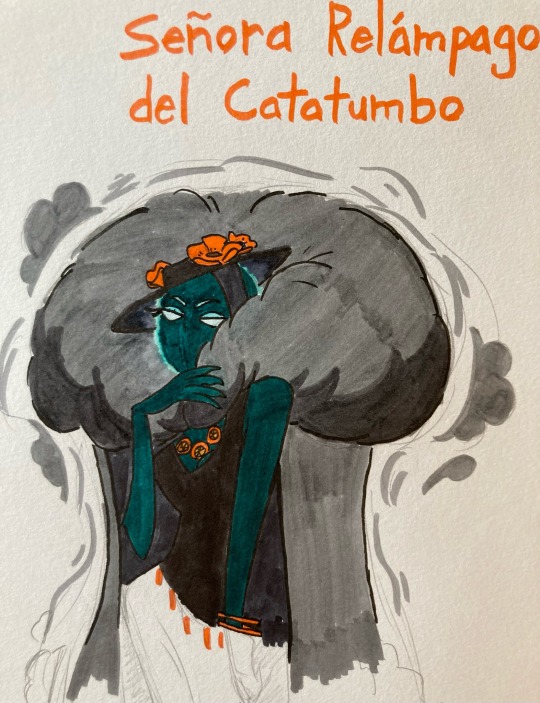


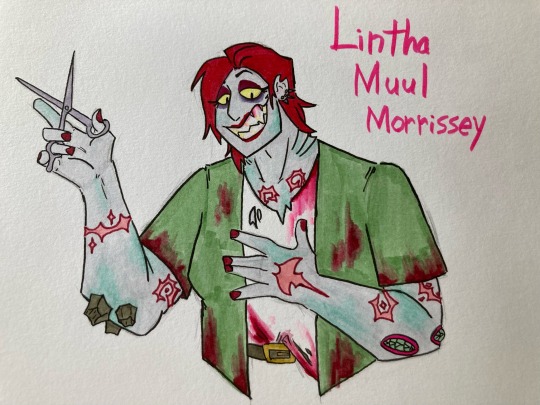
For the nautical-themed Exalted campaign I’m running, I’ve been introducing plenty of new characters now that they’ve traveled to the island of Brightwork.
Señora Relámpago del Catatumbo (she/her): A Storm Mother with a big ego and a flair for the dramatic. She’s taken the island of Brightwork hostage bc she didn’t like the opera they put on about her. Now the party is tasked with making a better production unless they want a hurricane to wipe out the city!
Tyto and Selika (he/him & she/her respectively): Prominent figures in Brightwork from a long line of royal armorers. Also the parents of one of the party members, and they aren’t too pleased with their daughters return to home when she should’ve been out making a name for herself in the Realm.
Lintha Muul Morrissey (she/her): Pirate captain from the demon-blooded Lintha family, she’s helping Catatumbo by keeping the islanders from fleeing. Kind of a freak with a hobby for taxidermy and surgically enhancing herself with demon-parasites.
21 notes
·
View notes
Note
whose photo did you use for aelinor penrose in the graphic where she’s the hypothetical granddaughter of baela? i recognize india from queen charlotte in the granddaughter of rhaena graphic
damn i think i mixed up the dragon twins 😭 who is the aelinor penrose who isn’t queen charlotte dhshdhshdj
aldklsafj it's fine anon lmao. here's the graphic anon is referring to btw, from my "how is aelinor related to house targaryen" meta-
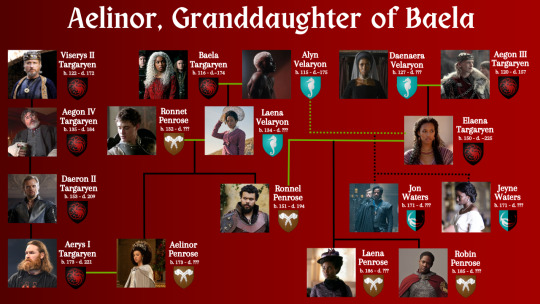
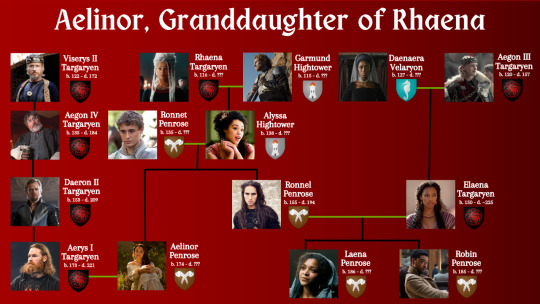
The Aelinor Penrose that is the granddaughter of Rhaena (on the right) is Samantha Barks. She played Eponine in the Les Miserables movie and 25th anniversary, and has been in a bunch of productions since then (her oom pa pa as nancy in oliver! is genuinely one of my favorites, she's so fun). She has one (1) black grandparent so I thought she'd be a good fit for Aelinor!
If anyone is curious about my fancasts (i know how hard it is to find period resources for PoC!!) it's-
Viserys II - Linus Roache
Aegon IV - Alfred Molina
Daeron II - Marc Warren
Aerys I - Sami Zayn. The only not really accurate casting here, because I struggled on finding a North African or Palestinian fancast that has a facial heir, looks white, isn't egregiously old, and I hadn't already used for the Martells lmao, so I went with my man Sami Zayn (real name Rami Sebei), who is Syrian (so still West Asian like Palestinians) (and also a cool dude and great wrestler).
Daenaera Velaryon - Jodie Turner
Aegon III - Jamie Campbell Bower
Elaena - Kylie Bunbury (not a lot of people know this but her mom is white! she's my go to "mixed people should not be barred from playing monoracial characters because a lot of mixed people do not actually get clocked as being mixed" right next to bianca lawson as "plenty of light skinned people are in fact monoracial too").
Ronnet Penrose - Max Irons
Alyn Velaryon - gonna be real honest I just grabbed a model off pinterest because the Alyn casting hadn't been released yet when I made this lmao
Rhaena Specific Fancasts
Alyssa Hightower - Ruby Barker
Aelinor Penrose - Samantha Barks
Laena Penrose - Antonia Thomas
Robin Penrose - Regé-Jean Page
Ronnel Penrose - Willy Cartier (his mom is senegalese and vietnamese and he's talked a lot about how her identity has affected his own mixed identity which was why he came to mind)
Baela Specific Fancasts
Laena II Velaryon - Crystal Clarke
Ronnel Penrose - Howard Charles
Laena Penrose - Denée Benton
Robin Penrose - Adetomiwa Edun
Jon Waters - Adrian Lester
Jeyne Waters - Karidja Touré (she's in that amazing movie Girlhood but this picture is from a short film she was in called The Adventures of Selika)
Aelinor Penrose - India Amarteifio
Also here are some cute pics of the actors and their fams-
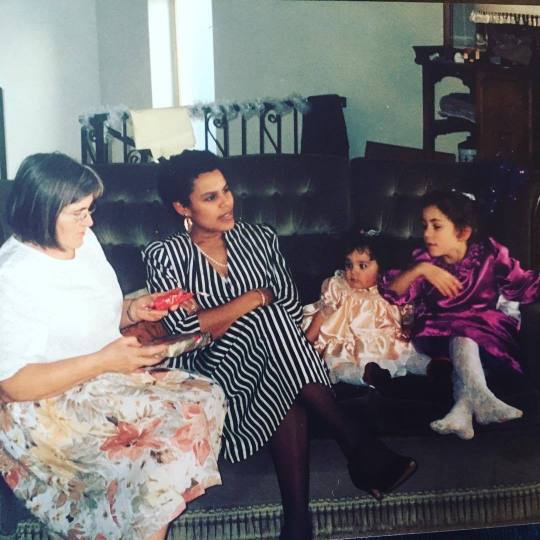

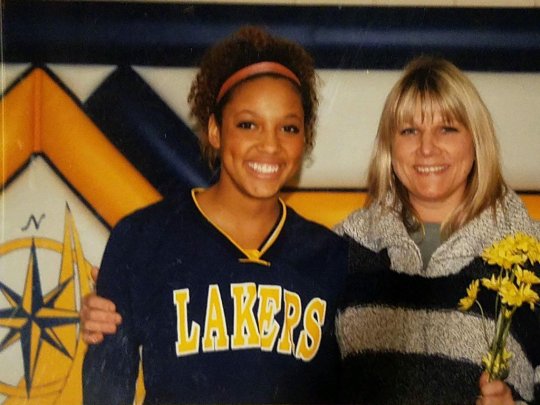
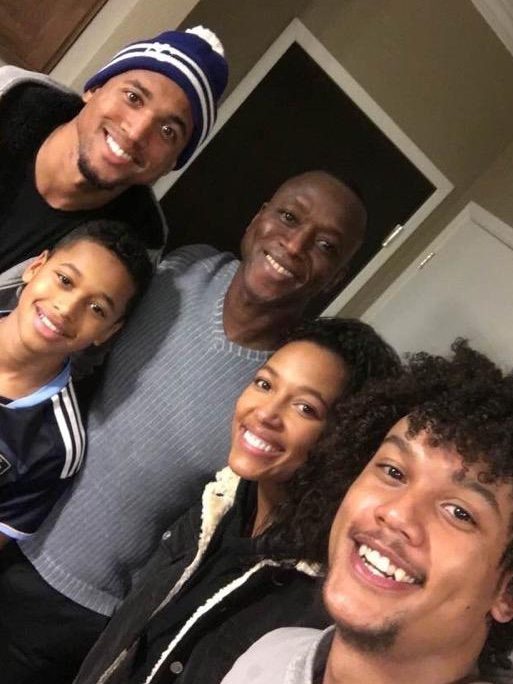
[samantha barks and her mom and grandma (and sibling I think); willy cartier and his mom leah cartier; kylie bunbury and her mom; kylie bunbury and her dad and siblings]
#could not find a picture of sami zayn's parents but tbf wrestlers who don't have kids and aren't part of a dynasty usually DON'T#regularly post pictures of their families to keep up kayfabe.#asks#anons#fancasts#not to be like 'im mixed :)' about it but it is in fact important to me to showcase mixed actors as mixed characters!!
4 notes
·
View notes
Text
youtube
Giacomo Meyerbeer (1791-1864) - L'Africaine, Act II: Sur mes genoux, fils du soleil (Selika, Vasco)
Artist: Claudia Sorokina & Artist: Bernhard Berchtold
Orchestra: Robert-Schumann-Philharmonie, Conductor: Frank Beermann
2 notes
·
View notes
Text
Many great divas of the last thirty to forty years have been African Americans: Grace Bumbry, Martina Arroyo, Shirley Verrett, Leona Mitchell, Betty Allen, Mattiwilda Dobbs, Kathleen Battle, Leontyne Price, Jessye Norman. And yet, until recently, opera was a white enterprise. Most opera houses forbade women or men of color from singing or attending. Few blacks attended the Metropolitan Opera, even in the absence of strict segregation policies, and no blacks sang leading roles there until Marian Anderson made her postprime debut in 1955 as Ulrica the gypsy witch in Un Ballo in Maschera. Rosalyn M. Story's recent study, And So I Sing: African-American Divas of Opera and Concert, details a long history of African-American women achieving fame either through recital work or through operatic performances in all-black companies.
In Jean-Jacques Beineix's film Diva, the diva, Wilhelmenia Wiggins Fernandez, an American woman of color, subverts the traditional image of the white diva and reminds us that divas, though usually white, have been linked to racial otherness, darkness, exoticism, and "blood". Long before the recent flourishing of the African-American diva, opera culture used images of darkness to demonize the diva. Color is one of the primary metaphors for the qualities of vocal tone. Singers are taught to avoid the "white" sound and to cover the tones, to make them darker. Roles like Carmen rely on the notion of the diva's "Latin blood". When divas have been made up to appear Asian or African for such roles as Aida, Selika, Cio-Cio-San, and Iris, they were expressing opera culture's insistence on the dark nature of the diva, as well as underscoring, in a problematic masquerade, the white diva's separation from the women of color she portrays.
The voice of the black operatic or concert diva was imagined to emanate directly from her ethnicity: commentators referred to Marian Anderson's "Negroid sound." And listeners have used metaphors of darkness and of racial essence to describe the appeal of certain female operatic voices even when the singer was white. Maria Malibran and Pauline Viardot were frequently described as having non-European features; one friend of Malibran speculated on the diva's "negro blood." A journalist, describing Adelina Patti as a child, notices her "little brown throat," her "Dark arms" clinging to her girl playmates' "white little necks"; because of her darkness, she is a "born exponent of the Spanish type." Italian origin was itself considered a sign of darkness: Margherita de L'Epine was called the "tawny Tuscan."
The diva brings her vocal treasure abroad, on tour to the colonies; and she finds there, among the colonized, a reflection of her abjected organ. Galli-Curci's biographer, narrating the diva's tour of Asia and Africa, alternates descriptions of her "native" audiences and accounts of her larynx's increasing vulnerability to medical specialists and to disease, as if the diva's voice, sent to tame and tranquilize the colonized, were itself the empire's possession, doomed to mysterious maladies and uncontrolled passions. Galli-Curci was like a missionary bent on conquering darkness; but her voice, because it was female, hidden, and inscrutable, was already aligned, in the imagery of empire, with the colonized.
- The Queen’s Throat: Opera, Homosexuality, and the Mystery of Desire, Wayne Koestenbaum.
6 notes
·
View notes
Text
Jean De Reszke sings O Paradis from Meyerbeer's L'Africaine (March 15, 1901)
This is a live recording at the Metropolitan Opera (with very bad quality). The cast also included Lucienne Breval as Selika, Suzanne Adams as Ines, Giuseppe Campanari as Nelusko, Marcel Journet as Pedro, Eugene Dufriche as Diego, Jacques Bars as Alvar, Pol Plancon as Grand Inquisitor and High Priest, Mathilde Bauermeister as Anna and Aristide Masiero as Usher, conducted by Philippe Flon.
#classical music#opera#music history#bel canto#composer#classical composer#aria#classical studies#maestro#chest voice#Jean De Reszke#dramatic tenor#tenor#Metropolitan Opera#Met#L'Africaine#Giacomo Meyerbeer#Theatre Royal#Drury Lane#Covent Garden#Royal Opera House#classical musician#classical musicians#classical history#history of music#historian of music#musician#musicians#diva#prima donna
5 notes
·
View notes
Text

Selika Exposito Villa..
#model#woman#hot models#models#fashion#beautiful women#blondes#blonde#sexy blond#glamoroussource#glamorousfashion#glamour#glitter#glow#mini skirt#sexy
6 notes
·
View notes
Text

Grace Bumbry as Selika in MEYERBEER's *L'Africaine* with Plácido Domingo on a production from the Met, 1978
2 notes
·
View notes
Photo

𝗙𝗿𝗲𝗱𝗲𝗿𝗶𝗰𝗸 𝗗𝗼𝘂𝗴𝗹𝗮𝘀𝘀 𝗢𝘄𝗻𝗲𝗱 𝗮 𝗖𝗼𝗽𝘆 𝗼𝗳 𝗮 𝗦𝘁𝗿𝗮𝗱𝗶𝘃𝗮𝗿𝗶𝘂𝘀, 𝗛𝗶𝘀 𝗚𝗿𝗮𝗻𝗱𝘀𝗼𝗻 𝗣𝗹𝗮𝘆𝗲𝗱 𝗳𝗼𝗿 𝗧𝘄𝗼 𝗣𝗿𝗲𝘀𝗶𝗱𝗲𝗻𝘁𝘀 𝗙𝗿𝗲𝗱𝗲𝗿𝗶𝗰𝗸𝗗𝗼𝘂𝗴𝗹𝗮𝘀𝘀 wasn’t just an abolitionist leader, author, and statesman – he was also a music lover. He wrote passionately about the importance of music in communities of enslaved people in his autobiography, Narrative of the Life of Frederick Douglass. In fact, he wrote that music gave him his “first glimmering conception of the dehumanizing character of slavery. I can never get rid of that conception. Those songs still follow me, to deepen my hatred of slavery, and quicken my sympathies for my brethren in bonds.” Later, when Frederick Douglass was free from slavery, music continued to play an important part of his life. In his home, he shared all kinds of music with his family and guests. An avid violinist, one instrument he owned was a copy of a Stradivarius that is now the Frederick Douglass National Historic Site. It seems his love of music rubbed off on his 𝗴𝗿𝗮𝗻𝗱𝘀𝗼𝗻, #𝗝𝗼𝘀𝗲𝗽𝗵𝗛𝗲𝗻𝗿𝘆𝗗𝗼𝘂𝗴𝗹𝗮𝘀𝘀, who had an international career as a #violinist 🎻. Joseph Henry got one of his first big breaks at the 1893 World’s Columbian Exposition held in Chicago. The same year, he performed in Washington D.C. along with Matilda Sissieretta Joyner Jones, a famous singer known by the name “Black Patti.” Joseph Henry made his first White House appearance in 1899 to perform for William McKinley. (Later, he returned to play for president Taft.) Though McKinley welcomed Douglass, he also welcomed music that stereotyped African Americans. For example, A Valentine’s Day concert program under McKinley’s administration featured minstrel songs such as “Mammy’s Little Alabama Coon.” Frederick Douglass may not have ever performed at the White House himself. He did, however, attend an important White House performance. In 1878, Marie “Selika” Williams sang for President Hayes at the White House, marking what may have been the first appearance by an African American musician there, according to White House Historical Society emerita director Elise K. Kirk. (at DuSable Museum of African American History) https://www.instagram.com/p/CeTT-KULONl/?igshid=NGJjMDIxMWI=
3 notes
·
View notes
Text
Random Real Thoroughbred: LAFRICAINE
LAFRICAINE is a chesnut mare born in France in 1872. By PHARAON out of SELIKA.
Link to their pedigreequery page: https://www.pedigreequery.com/lafricaine
0 notes



